by Mohezin Tejani
Special to Simerg
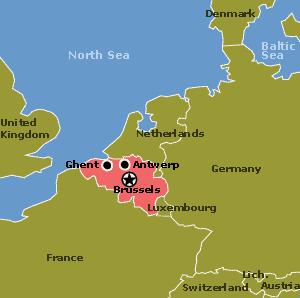
UN Map of Belgium. Country area: 30528 sq. kms; Currency: Euro; Population: 10,647,000; Capital city/population:Brussels (1,892,000); UN membership: December 27, 1945. Credit: UN data.
Belgium is a country steeped in rich European history that goes far beyond the stereotype of beers and chocolates that it is typically known for. It is an enchanting, magical land full of medieval town halls, market squares, and ancient churches, many adorned with paintings by some of Europe’s most famous artists, such as Ruben, Brueghel, and the Van Eyck brothers.
Politically, Belgium’s history is one of conquest: first by Julius Caesar and then much later by the Dutch, the Spaniards, and finally by the Germans during the Second World War. The post-invasion consequences are still felt today. In 1993, a decentralized federal system was instituted that divided the country, both linguistically and politically, carving it into three regions (Flanders, Wallonia, and Brussels), each with their respective regional governments.
Brussels, the multicultural capital city (with an exotic African Quarter filled with immigrants from former colonies) is the only region in the country where both Flemish (very close to Dutch) and French are spoken. Not to worry, though; most Belgians speak good English, so you will be easily understood.
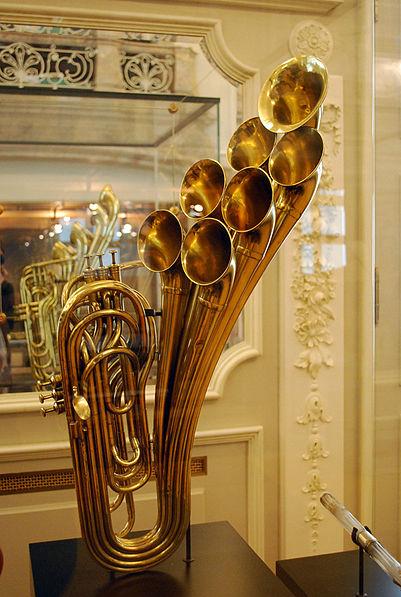
Antique instrument on display at the internationally renowned Musical Instrument Museum (MIM) in Brussels which has a collection of over 8000 instruments. Photo: Wikipedia.
As you wander through the city exploring its diverse architecture, spanning from baroque guildhalls and opulent palaces to postmodern skyscrapers, you will soon understand why Brussels is also known for its vibrant art scene. The famous Belgian surrealist René Magritte studied here, and today the city is home to numerous artists and art museums. Be sure to visit the unique Comic Strip Museum (both Tintin and the Smurfs originate in Belgium), and the spectacular Musée des instruments de musique, which boasts the world’s largest collection of musical instruments. Both museums are housed in superb examples of the city’s art nouveau architecture made famous by the designer Victor Horta. Brussels’ historical buildings all stand side-by-side to beer gardens, jazz clubs, street cafés, and a host of fine dining venues, including some thirty Thai restaurants (my favorite is the Blue Elephant).
Once you’ve exhausted your discovery of Brussels city life, just 28 kms east and a quick fifteen-minute train ride lies the quieter sirens-free cobblestone town of Leuven in the Flanders region. Leuven is home to one of the oldest and most prominent European universities where famous scholars like the philosopher Eramus and the cartographer Mercator once roamed its hallowed corridors. Built in 1425 and officially sanctioned by a Papal edict, this Catholic university houses some 40,000 students today—almost half the population of the town—in many of the old residences once inhabited by Béguinage women (a progressive religious women’s movement spearheaded in the seventeenth century by widows from the ongoing wars). Don’t be surprised to see students dressed in jeans and tank tops come out of these ancient brick homes to bicycle their way to class or stop for a quick sandwich of fresh salmon, washed down with pints of the local brewed Domus beer at one of the numerous sports pubs in the city.

Begonia carpet in front of the Town Hall, Leuven, arranged with two-thirds of a million begonias in a kind of tapestry. Photo: Mo Tejani. Copyright.
If you happen to be walking near the gothic-styled Town Hall on a sunny September morning (like I was), you might be lucky enough to come across an immense carpet of gorgeous begonia flowers—green, yellow, pink, and red petals—covering nearly the entire length of the town square known as Grot Markt. This tradition, which has become an annual event, started in 1961 as an homage to the citizens of Leuven who had made a significant contribution to the city. At St. Paul’s Cathedral nearby you will come face-to-face with a carved wooden head deemed to be the real face of Christ before you arrive at the world-famous painting of the Last Supper, this version depicted by Flemish Primitive painter Dirk Bout in the fifteenth century. It is one of the earliest examples of European perspective drawing. Outside the cathedral is a vastly different world. While I was walking along a nearby cobblestoned lane, I came across four pairs of old, torn shoes, tied and dangling from a telephone wire strung across the age-worn buildings on either side of the street. Puzzled, I asked a Leuvenite passing by what this was all about. “Student pranks,” he replied with a shrug.
Like it or not, the old and the new are entwined in historic, laid-back Leuven.
Further southwest along I-40 (if you are driving) lie the cities of Liège and Namur in the Wallonia region of the country where French, rather than Flemish, is the preferred language. This region boasts numerous medieval stone carvings and metalwork (particularly brass), cathedrals, mineral water baths, and the Hautes Fagnes National Park—a haunting but interesting landscape of heaths, swamps, and woods bordering Germany. For the more adventurous nature lovers, hiking through the nearby Ardennes range will be a thrilling trek along deep river valleys and high forests with fast gushing green rivers winding through mystic landscapes. Worth noting is that this serene setting was once the site of the notorious Battle of the Bulge in World War II.
Fifty kilometres west of Brussels is the enchanting city of Ghent. Sitting at the junction of the Leie and Schelde Rivers, Ghent was Europe’s largest cloth producer in the fourteenth century. A boat trip winding its way under ancient bridges will bring you past the landmark Belfry Tower on the main square with St. Michael’s dragon perched on the highest of three spires protecting the townsfolk. As you continue your boat ride down river, you will pass a 420-year-old cannon that never fired a single shot during the world wars, and even a fifteenth century hospital used to heal the war wounded. Museums and churches housing exquisite examples of medieval European art are everywhere. You may want to invest in a museum pass that allows free entry into all of them and includes bus and tram transport as well.
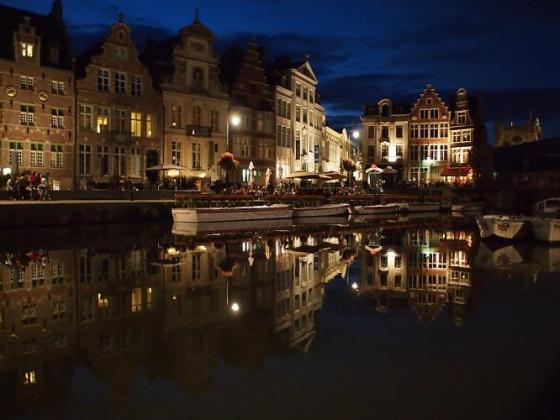
Ghent by night. Photo: Mo Tejani. Copyright.
Yet side-by-side such historic monuments, present-day Ghent has sprouted a host of twenty-first-century cultural sites, such as the Stage Circuit (comprised of an array of modern theatres), the Sphinx Cinema (Belgium’s largest movie portal), new Law Courts (housed in a glass and steel six-storey building), and even a Poetry Centre at Ghent University. For those of you who wish to see people’s art (as opposed to royal or papal sponsored art) be sure to explore Graffiti Alley, a brick tunnel lined with graffiti on both sides. You might just be fortunate enough to catch one of the young aspiring artists spray painting his section with images of Tintin in a Darth Vader costume.
Ghent by night is even more spellbinding than by day, particularly since the completion in 1998 of the citywide lighting project. After a saturating day of boat trips and walking or bicycle tours (tour guides in various languages are readily available) treat yourself to huge portions of seafood platters and round it up with one of Belgium’s renowned sumptuous deserts (my favorite was crème brûlée). Belgians of course like to have their meals with one of the 168 varieties of Belgian beers to choose from. Patershol neighborhood is where you’ll find dozens of restaurants serving up both traditional Flemish and international cuisine. Be sure to take an evening stroll along the city’s promenade (perhaps to walk off the weight gain) to catch the glorious night glow of ancient towers and contemporary concert halls reflected in the calm Schelde River.
Ghent is a perfect marriage of history and modernity.
Bruges, eighty-eight kilometres from Brussels in the western part of Flanders, is another historic city. Dubbed the “Venice of the North” by locals and recently named a UNESCO heritage site, it is once again easily accessible by trains and buses—some that reach as far as London. On a Sunday morning, you will pass joggers and young mothers out for walks with children in strollers coursing around the Lake of Love (make a wish for a life-long partner at the lake’s romantic bridge). The saintly chimes of the Bruges Bell Tower will ring at fifteen minute intervals (now automatically controlled from the carillon towers), as you saunter along the Zwin estuary full of mallard ducks and white swans searching for easy food pickings from the numerous tourists, some on horse-and-carriage tours. During your walking tour you might come across statues of the four horsemen of the Apocalypse in a lush green park or more convent houses of Béguinage women now inhabited by nuns of the Benedictine Order carrying on the traditional vows of chastity and silence, while working with the poor and the downtrodden.
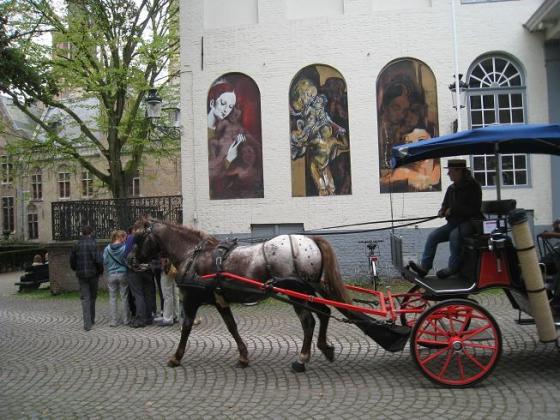
Exploring Bruges by horse and carriage. Photo: Mo Tejani. Copyright.
At the market square, once the center of town where public hangings by guillotine took place, take a moment to imagine fifteenth century guards in full medieval costume atop the high watchtower keeping a keen lookout for potential invaders bent on attacking the city. In the hazy morning mist, listen for the clack-clack of horseshoes on the cobblestone streets of Bruges, like a scene from a Sherlock Holmes novel. Turn a corner and you are likely to find an eighteenth century stone bridge and, maybe, even run into street musicians (as I did) playing magical Philip Glass-like melodies on two large semicircular iron bowls. For those who plan to visit this ethereal town in the spring, you’ll be fortunate enough to catch colorful carpets of daffodils in the tranquil Begijnhof Square when most of the visiting crowds have long gone home.
Bruges, more so than Ghent or Lueven, maintains its historic past with minimal intervention from the present.
Traveling north of Brussels, some forty kilometres away and an easy 90-minute train ride, brings you to the exquisite stone, glass, and iron Central Railway Station in the heart of Belgium’s second largest city—Antwerp—one of Europe’s largest seaports. This cosmopolitan city, whose population now boasts 163 nationalities, was seriously destroyed during both world wars. Today, over half a century later, it competes with Paris, Rome, and London in up-scale designer shops (Tiffany’s, Armani, et al.), and is still the largest diamond center in the world. You don’t want to miss out on the Diamonds Museum that not only explains the history of the gem worldwide, but also shows how this precious stone is excavated, cut, polished, and sold in today’s global economy. Replicas of the world-famous Kohi Noor and Blue Hope diamonds are on display as is the history of blood diamonds made famous by the de Caprio movie with the same name.
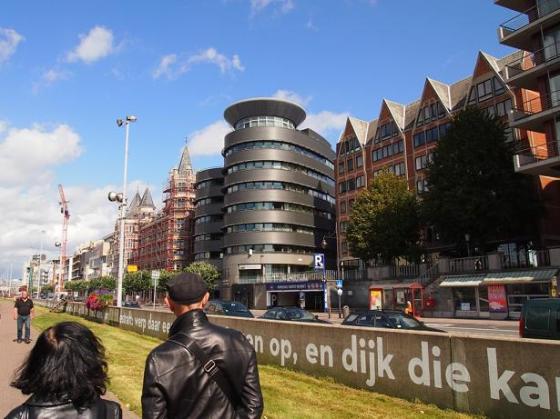
The world’s longest poem, in Antwerp. The work by city poet Joke van Leeuwen is appropriately titled “Eleven hundred and forty-four metre poem” as it measures 1,144 metres. Photo: Mo Tejani. Copyright.
Antwerp is also home to the Royal Palace where Napoleon Bonaparte hosted many of his generals during the Napoleonic Wars. The rooms are ornamented with ballroom chandeliers, Coats of Arms of various European power houses painted on its ceilings, and even the original furniture (some with imported Egyptian motifs) where royal guests like Queen Victoria of England and the painter Rembrandt once sat and chatted with the famously short French general.
Within walking distance from the Royal Palace is well-known Meir Street, complete with diamond displays in shop windows and a host of exotic food restaurants (Argentinean, Arabic, and Ethiopian to name a few). On this street is also the house where the world-famous Ruben was commissioned to paint most of his 3,000 paintings, many of which are on view in the Rubenshuis Museum next door. Two blocks further down, you’ll probably be a little taken aback to see two historic three-storied buildings (one gothic and one art nouveau) with the ground floors housing Disney offices and a McDonald’s restaurant. Yet another experiment in fusing the historic with modern-day economics.
On your way out of Antwerp, be sure to read the world’s longest poem on the wall by the pier.
Postscript: Given the current financial and cultural identity crises that many European countries are facing, a decade after 911 and the recent bank bailouts, it will be interesting to see how this Belgian experiment in regional diversity pans out in the future, especially since after the outcome of June 2010 general elections, attempts to form a coalition federal government in Brussels failed for the last 15 months so much so that the constitutional monarch king Albert II in a speech in February 2011 warned about the danger of Belgium dissolving into a failed state with Flanders seeking succession from the country as a separate state.
Date posted: Thursday, May 3, 2012.
© Mohezin Tejani 2012.
_______________
Copyright: M.Tejani April 2012.
 About the author: Born in Tanzania to Indian parents, Mo Tejani lived in Uganda for eighteen years of his life. Along with 80,000 other Asians, he and his family were forced to flee Idi Amin’s reign of terror in 1972. As a refugee, he first fled to England and then to America of the late sixties and early seventies. Fluent in eight languages, he has spent twenty years working in refugee camps in Asia, training rural farmers in Central America, educating First Nation tribes in Canada, and coordinating poverty reduction projects in Africa.
About the author: Born in Tanzania to Indian parents, Mo Tejani lived in Uganda for eighteen years of his life. Along with 80,000 other Asians, he and his family were forced to flee Idi Amin’s reign of terror in 1972. As a refugee, he first fled to England and then to America of the late sixties and early seventies. Fluent in eight languages, he has spent twenty years working in refugee camps in Asia, training rural farmers in Central America, educating First Nation tribes in Canada, and coordinating poverty reduction projects in Africa.
In the first of his three-volume travel memoirs, A Chameleon’s Tale: True Stories of a Global Refugee, (PEN New York book award finalist 2007) Tejani takes the reader with him on his globetrotting travels. Kate Webb from API calls him a “cross-cultural Kerouac,” and others have likened Tejani’s writings to Karen Connolly and Paul Theroux. Travel writer Tim Cahill says reading Mo’s stories “is like eating popcorn: you can’t stop devouring them.” Three of his stories in the second volume “Global Crossroads: Memoirs of a Travel Junkie” have won prestigious awards in the US now on Amazon Kindle as an E-book at http://www.motejani.com/synopsis/global_crossroads.php
Tejani is a veteran at Writers Festivals on the Asia circuit including a month-long book tour of Australia, presentations at Bali, Byron bay and Melbourne Festivals. His radio and print interview with ABC and Victoria Writers magazine were distributed nationwide and his videotaped panel sessions can be found on ABC 2 Big Ideas website.
He currently resides in Chiang Mai, Thailand and is working on the third volume of his memoir trilogy.
Website: http://www.motejani.com
___________
Tejani’s other essays on Simerg:
A Thank You Letter to Prince Sadruddin Aga Khan – “A Man of Multiple Visions”
“New Hampshire Twilight” and “Iguazu”
Inca Gods
Ute Visions
A Letter to Charles Darwin from Galapagos
Singida
Childhood Games
_____________
Share this article with others via the share option below. Please visit the Simerg Home page for links to articles posted most recently. For links to articles posted on this Web site since its launch in March 2009, please click What’s New. Sign-up for blog subscription at top right of this page.
We welcome feedback/letters from our readers on the essay. Please use the LEAVE A REPLY box which appears below. Your feedback may be edited for length and brevity, and is subject to moderation. We are unable to acknowledge unpublished letters.

There are other parts of Belgium – Namur, Dina are also beautiful cities. As an Indian married to a Belgium, the parts of Belgium you are showing are only the Flemish (Dutch dilate) speaking area propaganda of our anti-French speaking community of Belgium. Belgium has 3 major divisions, Flamish, French and German. It’s a small country but rich in its diversity of these communities. Bruxelles is the capital with its EuropenCommunity centres. If you come to Belgium please also visit the Wallonia (French) and German speaking regions.
Yasmin Adatia.
I feel like I have just seen all the exotic places described by Mo Tejani.